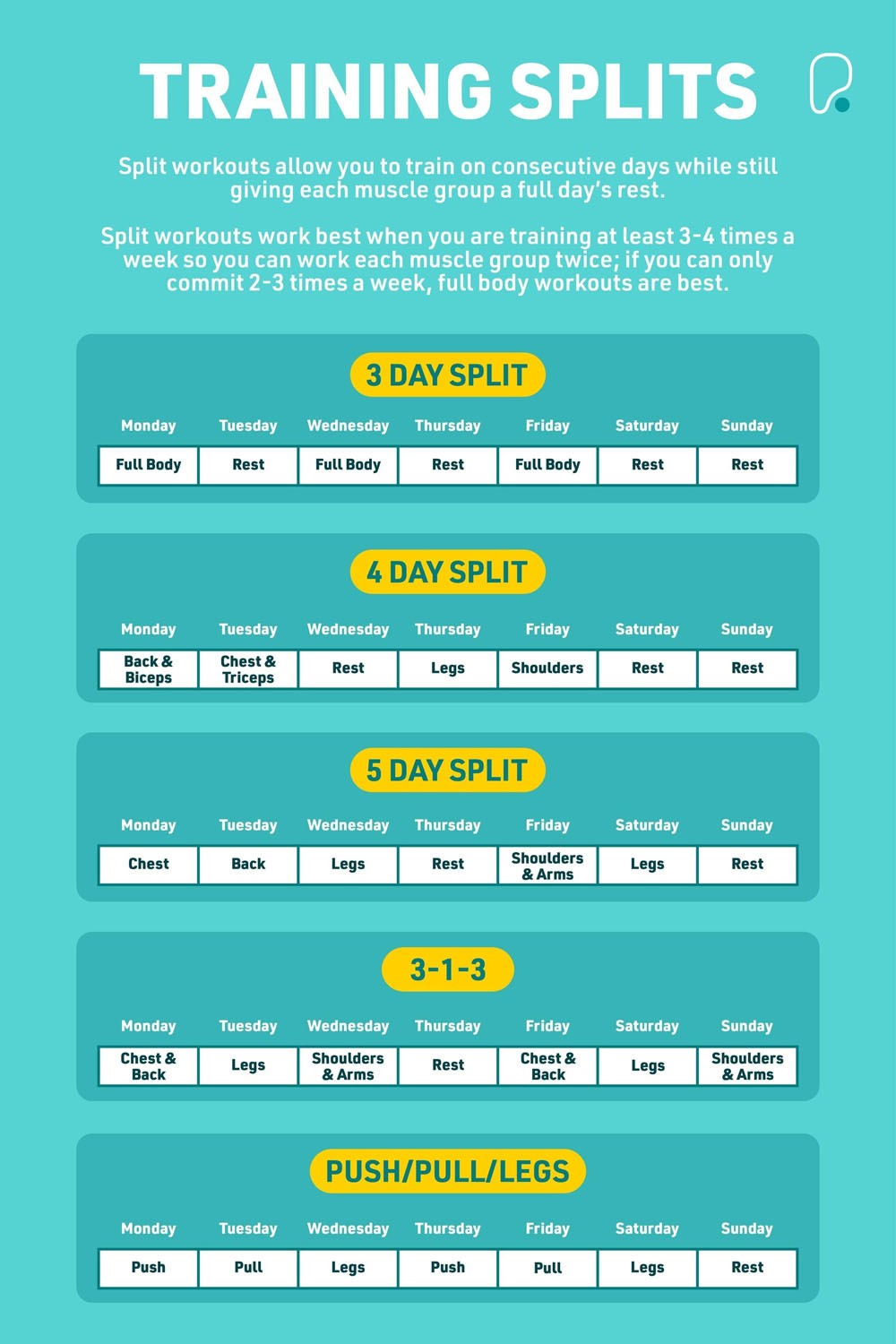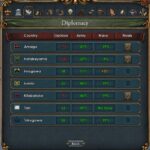Building muscle is a goal for many, driven by both aesthetic desires and significant health benefits. Beyond appearance, increased muscle mass boosts your metabolism, corrects postural imbalances, enhances overall strength and coordination, improves bone density, and slows age-related bone loss. While there are no shortcuts to achieving a muscular physique, a well-structured Workout Guide combined with proper nutrition can significantly streamline your journey. If you’re ready to maximize your gym time and build muscle effectively, this guide will provide you with the essential strategies.
Understanding Muscle Growth (Hypertrophy)
Muscle growth, scientifically known as muscular hypertrophy, is triggered by strength training. This process involves creating microscopic tears in muscle fibers through exercise. While it may sound counterintuitive, these tears are crucial for muscle development. As your body repairs these fibers, they become larger and stronger. Consistent strength training, therefore, leads to progressively bigger and more defined muscles.
While any form of strength training contributes to muscle development, specific training methods are more effective at maximizing hypertrophy. Let’s delve into the key elements of a workout guide that will help you achieve your muscle gain goals and explore different training approaches.
Key Principles of a Muscle Building Workout Guide
Creating an effective workout plan for muscle gain involves careful consideration of several factors: workout frequency, volume, weight lifted, and progressive overload.
Workout Frequency
Research consistently demonstrates that to stimulate muscle growth, each muscle group should be worked at least two to three times per week. This means incorporating gym sessions into your routine at least twice weekly, and potentially up to six times. While the enthusiasm to workout daily might be strong, remember that rest days are indispensable for muscle recovery and growth. Muscles don’t grow during workouts; they grow during rest as the body repairs and rebuilds muscle tissue.
Workout Volume (Sets & Reps)
Workout volume, defined by the number of repetitions (reps) and sets you perform, should be tailored to your fitness goals. For muscular hypertrophy, the sweet spot is generally considered to be 3-4 sets of 8-12 repetitions per exercise. This rep range has been shown to be highly effective in stimulating muscle growth.
Weight Selection
To induce muscle change, your workouts must challenge your muscles sufficiently. This necessitates choosing weights that are heavy enough to make the last few repetitions of each set challenging. You should feel like you could complete the target rep range, but struggle to perform even one more rep with good form. This level of exertion is essential for signaling muscle growth.
Progressive Overload
Progressive overload is a cornerstone principle in any effective strength training workout guide. The human body is remarkably adaptable. If you consistently perform the same exercises with the same weight, reps, and sets, your progress will plateau. Progressive overload overcomes this adaptation by gradually increasing the demands on your muscles over time. This can be achieved by increasing the weight, the number of reps, the range of motion, or the intensity (e.g., slowing down the tempo of each rep).
For hypertrophy, progressive overload might look like this: if you’re bench pressing 100 lbs for 3 sets of 8 reps this week, aim for 3 sets of 10 reps next week, and 3 sets of 12 reps the following week. Once you can comfortably perform 12 reps across all sets, increase the weight to, say, 105 lbs, and start back at 8 reps, repeating the process.
Free Weights vs. Machines: Choosing Your Workout Tools
Both free weights and resistance machines are valuable assets in a muscle-building workout guide. Neither is inherently superior, but their distinct characteristics make each more suitable for different needs and experience levels.
Resistance machines offer a fixed path of motion, making them particularly beneficial for beginners or those new to strength training. The guided movement simplifies exercise execution, minimizing the need for precise form knowledge and ensuring targeted muscle engagement. This also reduces the risk of injury and can allow for lifting heavier weights more safely, as there’s no risk of losing balance or dropping the weight. While excellent for novices, resistance machines are also favored by experienced lifters for isolating specific muscles and refining exercise form.
Free weights, such as dumbbells and barbells, demand greater control and often require a higher degree of core strength and stability. Exercises with free weights engage more muscle groups as stabilizers, leading to quicker muscle fatigue and potentially greater overall strength and stability gains.
For those new to working out or struggling to properly engage target muscles with free weights, resistance machines can serve as an excellent starting point to build foundational strength and learn correct movement patterns. As comfort and proficiency increase, transitioning to free weights allows for replicating the movement with added challenge. For instance, after mastering the seated chest press machine, you can progress to dumbbell bench presses.
Experienced individuals may prefer free weights or a combination of both for a comprehensive workout. If maintaining proper form is a challenge with heavier free weights, consider using supportive equipment like a weight training belt.
Designing Your Workout Split: A Guide to Structure
Workout splits involve dividing your weekly training to focus on specific muscle groups or movement patterns on different days. For example, you might dedicate one day to upper body exercises and another to legs, or separate workouts by movement type, like push exercises one day and pull exercises another.
Split workouts are particularly advantageous when training on consecutive days, as they allow muscles worked in a previous session to rest and recover while you train different areas. For optimal muscle growth, each muscle group needs to be stimulated at least twice per week. Therefore, split workouts are most effective when you can commit to training 3-4 or more times per week. If your schedule allows for only 2-3 weekly workouts, full-body workouts are generally more efficient.
Common and effective muscle-building workout splits include:
- Push/Pull/Legs (PPL) Split (6-day split): Divides workouts into push exercises (chest, shoulders, triceps), pull exercises (back, biceps, hamstrings), and leg exercises (quads, glutes, calves).
- Chest & Back/Legs/Shoulders & Arms (3-1-3 split): Alternates between upper body focused on chest and back, legs, and another upper body session focusing on shoulders and arms.
- Back & Biceps/Chest & Triceps/Legs/Shoulders (4-day split): Targets back and biceps, chest and triceps, legs, and shoulders on separate days.
- Chest/Back/Legs/Shoulders & Arms (4-day split): Similar to the previous 4-day split, but groups shoulders and arms together.
The push/pull/legs split is particularly popular and effective because it organizes workouts by movement patterns rather than just body parts. Push exercises primarily work the chest, shoulders, and triceps, while pull exercises engage the back, biceps, and hamstrings. This approach ensures balanced muscle development and efficient training.
If you decide to follow a split workout routine, the example training plan provided below offers a solid starting point.
Nutrition: Fueling Your Muscle Building Journey (Workout Guide)
While it’s technically possible to build muscle without meticulously tracking nutrition, optimizing your diet significantly accelerates and enhances muscle growth. Nutrition is an indispensable component of any comprehensive workout guide.
If your goal is primarily muscle gain and you’re comfortable with your current body fat levels, aim for a slight calorie surplus, approximately 5-10% above your maintenance calorie needs. Prioritize consuming at least 1.4 grams of protein per kilogram of body weight daily. Excellent protein sources include lean meats, poultry, fish, eggs, legumes, and dairy products.
If you’re aiming to lose body fat while building muscle, it’s still achievable to gain muscle even in a calorie deficit. In this scenario, adequate protein intake becomes even more crucial. Protein helps preserve existing muscle mass and encourages muscle growth while preventing your body from breaking down muscle tissue for energy instead of fat.
Beyond muscle repair and growth, nutrition plays a vital role in fueling your workouts. Consuming carbohydrates before your gym sessions can significantly boost energy levels, ensuring you can train with maximum intensity and achieve optimal results from each workout.
Example Workout Guide: Push/Pull/Legs Routine
Before embarking on this example bulking workout plan, consider these key tips:
- Prioritize Compound Movements: Begin each workout with compound exercises, which engage multiple muscle groups simultaneously (e.g., squats, deadlifts, bench press). Supplement with isolation exercises that target specific muscles (e.g., bicep curls, triceps extensions) towards the end of your workout. This approach maximizes muscle activation and growth.
- Warm-up and Cool-down: Always start with a dynamic warm-up to prepare your muscles and joints for exercise and finish with static stretches for a proper cool-down. This is crucial for maintaining flexibility, improving mobility, and minimizing the risk of injury.
- Incorporate Rest Days: Schedule regular rest days into your workout guide. Allow at least 24 hours of rest between working the same muscle groups to facilitate muscle repair and growth. Include at least one full rest day per week for overall recovery.
This example workout guide utilizes the popular push/pull/legs split, structured for six workouts per week. Links are provided for each exercise to guide you on proper form and technique. Remember, this is just a template; feel free to experiment with different exercises and workout splits to discover the best workout plan for your individual muscle gain journey.
(Insert Example Push/Pull/Legs Workout Plan here – similar to the original article’s example plan, but formatted clearly as a workout guide with sets, reps, and exercise names)
(Example – You would format each day like this, with exercises, sets, and reps. Refer to the original article for the actual exercise list)
Push Day:
- Exercise 1: Bench Press – 3 sets of 8-12 reps
- Exercise 2: Overhead Press – 3 sets of 8-12 reps
- … (and so on for all exercises in the Push day workout)
Pull Day:
- Exercise 1: Pull-ups (or Lat Pulldowns) – 3 sets of as many reps as possible (AMRAP) or 8-12 reps
- Exercise 2: Barbell Rows – 3 sets of 8-12 reps
- … (and so on for all exercises in the Pull day workout)
Leg Day:
- Exercise 1: Squats – 3 sets of 8-12 reps
- Exercise 2: Deadlifts – 1 set of 5 reps, 1 set of 3 reps, 1 set of 1 rep (or 3 sets of 8-12 reps depending on experience)
- … (and so on for all exercises in the Leg day workout)
(Repeat Push, Pull, Legs twice a week)
Conclusion: Your Path to Muscle Growth (Workout Guide Summary)
Building muscle is a challenging yet straightforward process. Consistency is key. Aim to work each muscle group at least twice per week, pushing your sets close to muscle fatigue. Ensure adequate rest to allow for muscle recovery and growth. Fuel your body with a protein-rich diet that includes healthy fats and complex carbohydrates. While significant muscle mass gains take time, you should start noticing and feeling positive changes relatively quickly with dedication and adherence to a solid workout guide.
If you’re ready to embark on your muscle-building journey, find a PureGym near you and become a member today. Our gyms are equipped with a wide array of high-quality resistance machines and free weights to support your strength training goals, whether you prefer to train independently or with guidance from one of our experienced personal trainers.

